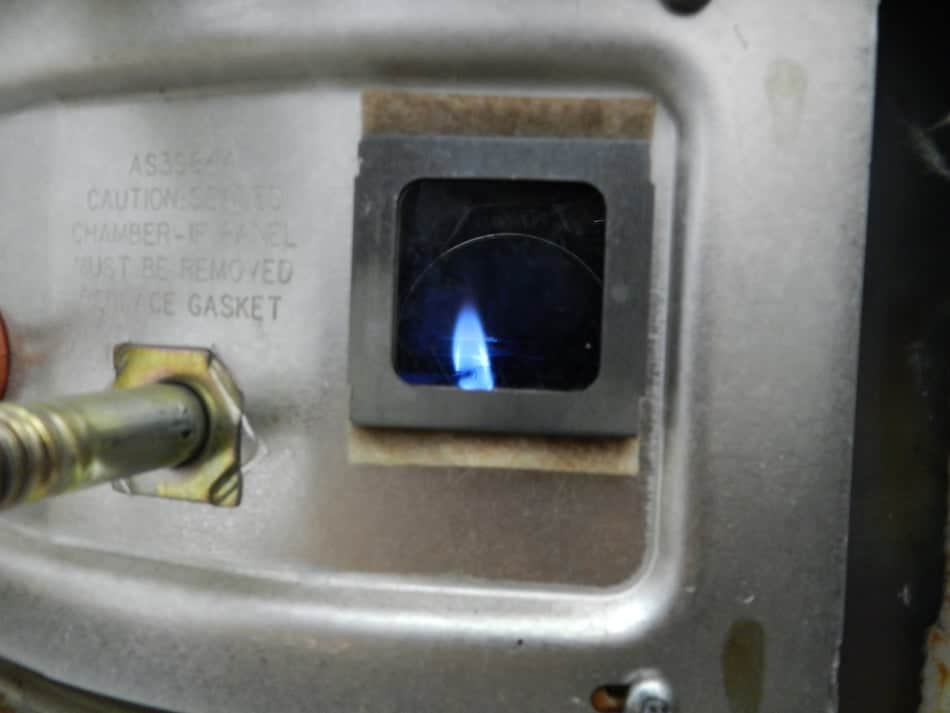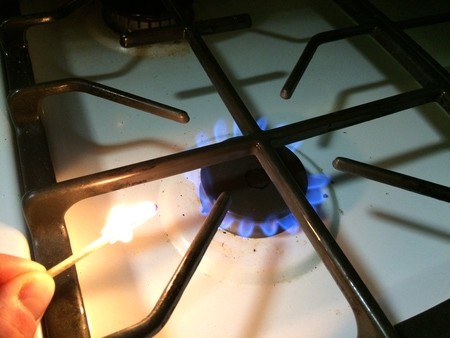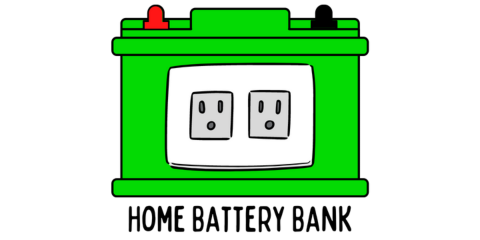When we first lost power after we bought our house, one of the pain points in the process was that we had an electric stove and obviously cooking became out of the question. I knew that the house has been piped with natural gas but we never upgraded our appliances and wondered if I could use a gas range during a power outage and without electricity.
Will my gas stove and oven still work without electricity?
Most older stoves allow the flow of propane or natural gas without electricity but have to be ignited manually. Newer units may have solenoid valves that prohibit gas flow without electricity.
That’s the short of it, and if you continue I’ll cover a few things I’ve learned along the way and how to make one of the newer units work during a power outage that does not allow gas flow without electricity!
I‘ve even got a video below to guide you through the process of getting your stove to work during a power outage!
Gas and Propane Ranges Can Still Work Without Electricity… Sort of
Older model stoves and ranges have the benefit of allowing the flow of gas or propane even when there is no electricity being supplied to the unit. You will, however, need a means of ignition. A lighter or match will work just fine.
If you want to tell whether yours will work, simply turn the knob for a few seconds and listen for the hiss of the propane or gas. If you hear it, then you can simply light a match or lighter next to the burner and then turn the knob to whatever setting you’d like.
Newer models aren’t so friendly of power outages. They are equipped with internal safety features that will not allow the flow of gas or propane unless there is electricity being supplied to the unit.
We can overcome this with 2 things:
- A 12-volt battery
- A power inverter (this one from Amazon will work just fine)
Simply take your 12-volt battery (from your car, boat, lawnmower, etc.) and hook the inverter up to it properly. Then plug the stove into the inverter. Voila! You will now have enough electricity to allow the flow of gas/propane and will be able to start the burners.
This is not intended to be used for the oven! An oven’s igniter is a power hog and will cause a mid-sized inverter to trip up and turn off. If you buy a large enough inverter, you will quickly drain your battery, so be careful.
I recommend avoiding oven use during a power outage.
Will I Still have Natural Gas for my Stove when the Power Goes Out?
Yes, the vast majority of the time you will still be supplied with natural gas when the electricity fails. While it is true that electricity is required to help assist in the pressure regulation of the natural gas as it works its way down the pipelines, most of the major centers that handle this operation are fueled by the natural gas itself for power so they are self-sustaining.
Even the ones close to city centers are generally equipped with generator systems that can be initiated when the power goes out, since those stations are generally run by electricity during the good times.
Natural gas is naturally pressurized at the source (in the ground) and just needs some help along the way – mostly to make the pressure safe for our homes. Since the lines are buried, they are not at risk of high winds or a drunk driver slamming into a telephone pole.
Unless there is a mass disruption of an entire grid or seismic activity (earthquake) which disrupts the pipes underground, you should be worrying much about losing the natural gas during a power outage.
Related Post: Will the Water Still Work if the Power is Out?
Will I Still have Propane to my Stove if the Power is Out?
The ol’ pig out back should work just fine for you in a power outage under the assumption that you haven’t allowed it to run out. The tank itself is pressurized and unless something physically disrupts the pipe leading into the house, you will continue to have the ability to access propane.
Since my Propane or Natural Gas Should Still Work, will all of the Things that use Them Still Work?
Not necessarily. A gas-powered water heater will still work if it has a standing pilot light and doesn’t have an electric ignition system. I know, a gas water heater that plugs into the wall? Just look for the cord. If your gas tank is free of a cord, it will still work.

Just because it will work doesn’t mean that you will have water to circulate through it. If you are wondering if your water will work, you can check out my article here to find out.
If you use gas for central heating, you will still have the supply to do it, but the blower itself requires electricity, so you won’t be doing much without being able to move the air.
How do I Light my Stove Without Electricity?
On most of the older models, you can ignite the stovetop by simply lighting a match and carefully hold the flame next to the burner as you slowly turn on the gas to it. If using a match, I prefer to light it first and then place handle portion of the match into a pair of pliers for extra reach so I don’t burn off the hair on my hand. That smell is just never good!

You could, of course, always use a lighter with a long neck like those used to light the underside of a propane grill. This would be the safest in my opinion.
Can I Light a Gas Oven Without Electricity?
The surface answer is no, you cannot light a gas oven manually without electricity. The safety features prevent this.
There must be enough electricity flowing through the ignitor coil (around 400-watts) for the gas to kick on and ignite. It’s not as simple as lighting a match to get it started and then walking away. Even if it were, would you want to stick your head and arm in the confined gas-filled oven while holding a match?
What if My Gas Stove Won’t Allow the Flow of Gas Without Electricity?
Luckily this situation can be remedied in a safe and cheap manner and it does not involve tampering with your stove and oven.
I have recommended these in other articles, and I will advocate for them again. The answer to this problem is in a 400-watt power inverter. Simple as that.

A stove that is fueled by gas or propane only needs a small amount of electricity to power the display and to create a spark when you try to ignite it. They barely use any electricity at all but the absence of it can cause the safety features inside to cancel the flow of gas on newer models.
Simply purchasing a 400-watt DC-to-AC inverter, like this one seen here on Amazon, can get you back up and running in no time. This unit will clamp onto a car battery and provide 400-watts of continuous energy to your appliances and a gas stove barely uses any of that.
You can pop the hood of your car, clamp on the inverter to the battery terminals, plug in an extension cord and run it to your oven as one method of operation without “power”.
Or, if it’s raining and you don’t want the inverter to get wet and die, you can disconnect your battery from the car and bring inside and do the same thing.
As long as you’re using the car battery to power just the stove then it is not going to do much to drain the battery at all. In fact, the car battery could charge your phones with the inverter or with clamp-on-battery DC adapters like the one seen here on Amazon (here for the additional 4-way splitter), and you can also power some lamps with LED lights with the inverter in a pinch as well.
Now, if you’re looking to start the oven with a car battery, you’re going to be putting quite the stress on it. First of all, you’d need a larger inverter like the one seen here on Amazon to power your ingnitor.
When I tested my ignitor with a Kill a Watt Mater® (Amazon) I was getting a 400-watt consistent reading. Considering a typical car battery has about 600-720 watt-hours, that’s putting quite the strain on the battery. Especially since the coil must be lit the entire time the oven is heating up.
Just keep in mind that car batteries are “starter” batteries and are not designed for deep discharges. They do not live long if you drain them down a long way and recharge them again more than 10 to 12 times. Keep the usage light, and if you’ve used the battery for a while make sure to hook it back up in the car and run the car for at least a half an hour to let the alternator charge the battery back up.
If you’ve run the battery down about halfway and still manage to start the car, it is best to drive it around for a while since the alternator will replenish the charge faster that way and you don’t want to be without a vehicle when the grid goes down for you.
